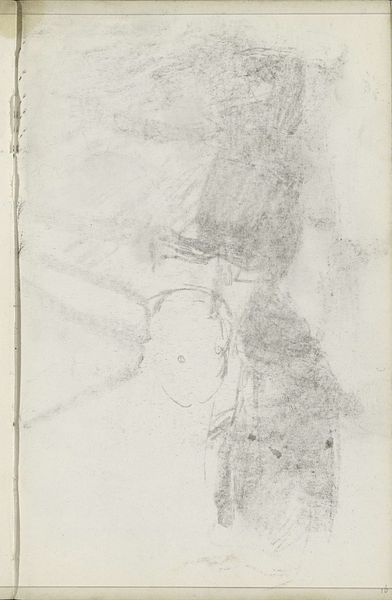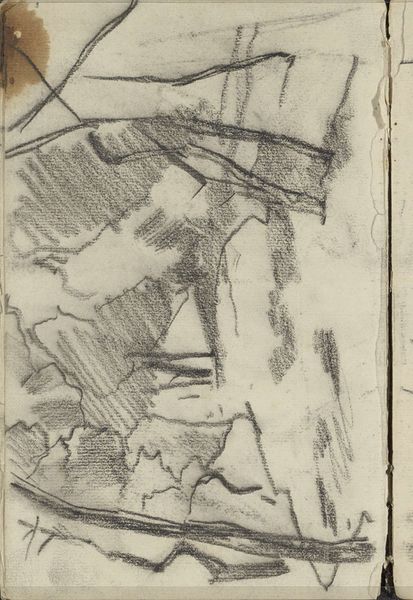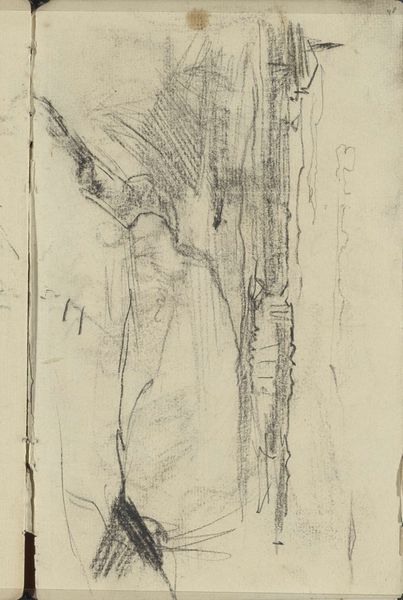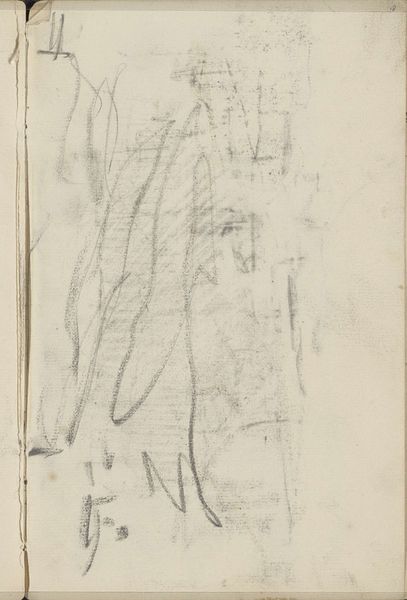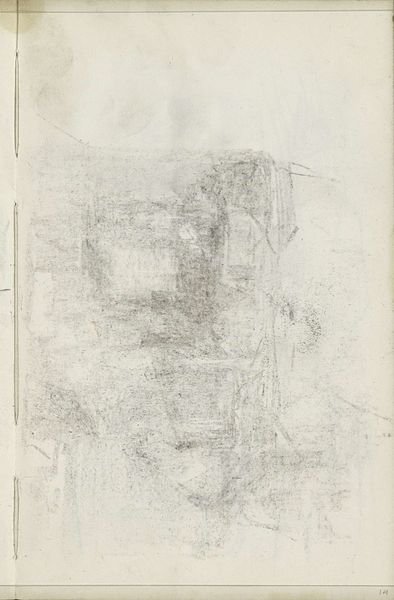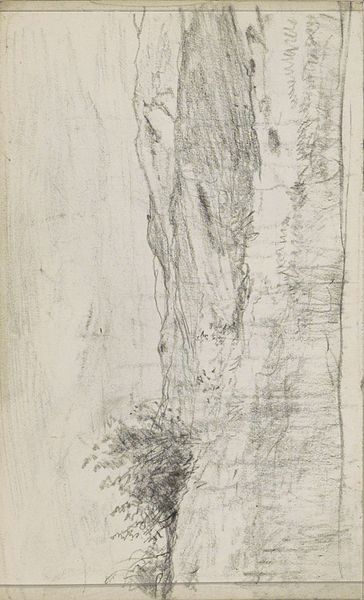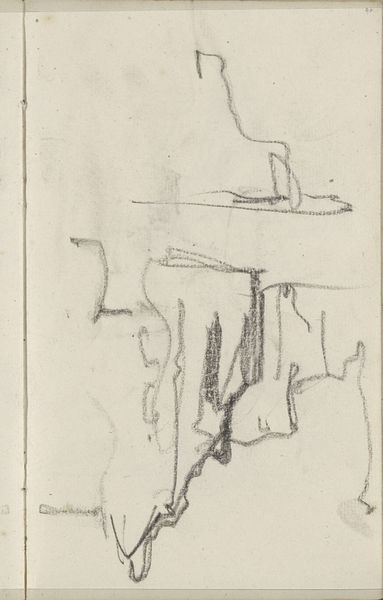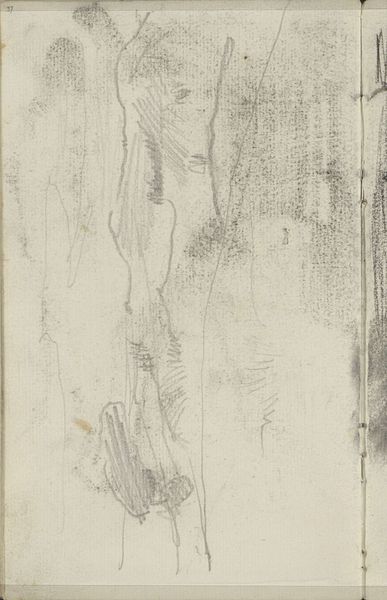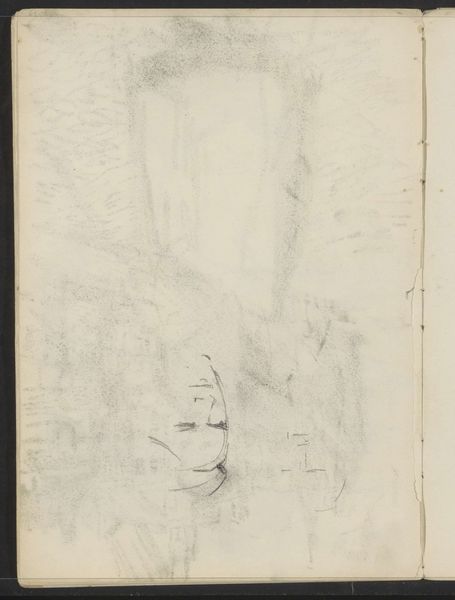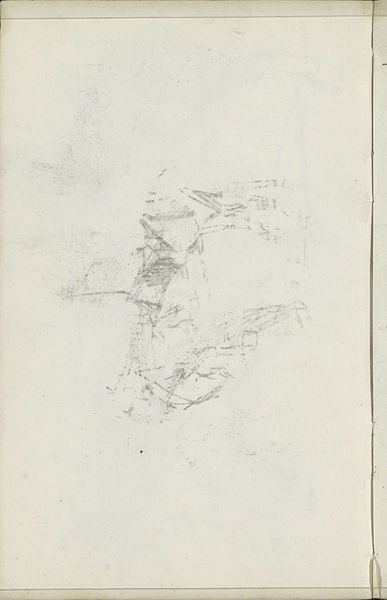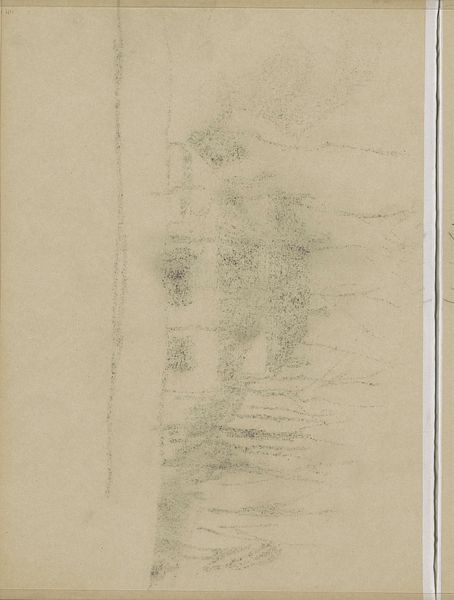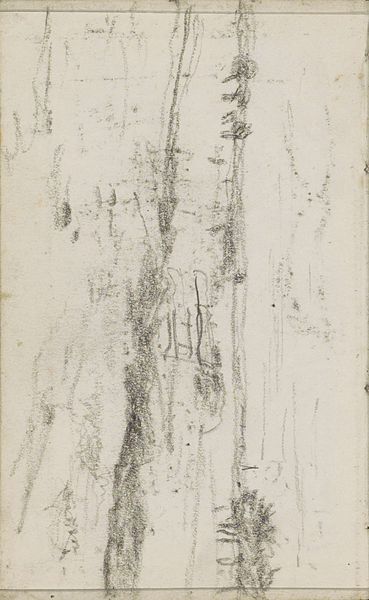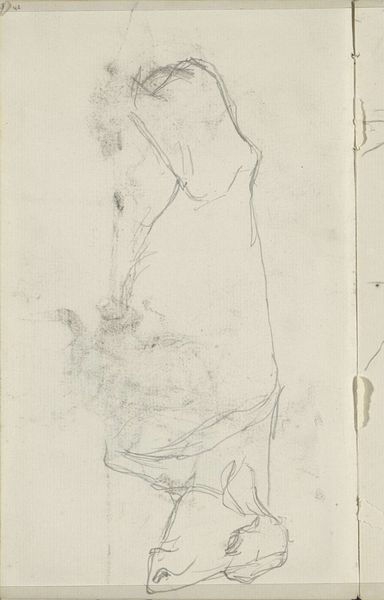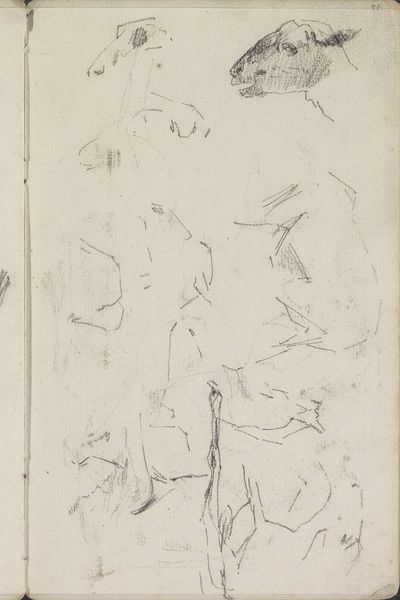
drawing, paper, pencil
#
drawing
#
impressionism
#
pencil sketch
#
landscape
#
paper
#
pencil
Copyright: Rijks Museum: Open Domain
Curator: Here we have George Hendrik Breitner’s "Landschap," created between 1880 and 1882, a pencil drawing on paper, currently residing in the Rijksmuseum. It looks unfinished, almost fleeting. Editor: Yes, an unfinished quality. The immediate impression is of a hazy, indistinct space, perhaps deliberately evoking the transience of lived experience of rural laborers. The composition has an arresting balance between light and shadow. Curator: Absolutely. Breitner, who is well-known for documenting Amsterdam street life, seems here to adopt a different narrative of rurality. This piece may engage with then-contemporary debates around land use and class divisions— the rapidly urbanizing Netherlands of the late 19th century meant the relationship to the land, particularly the access marginalized communities had to it, was heavily politicized. Editor: That's interesting. I am drawn to the structural simplicity. The economy of lines, the deliberate omissions that invite the viewer's eye to complete the scene. Note the use of line to construct a kind of phenomenological encounter of depth and perception rather than any specific topographical description. Curator: Precisely, it seems to serve less as an objective rendering and more like a reflection of society's growing awareness and perhaps anxiety around industrial advancement. This reminds me of a Gramscian discourse, how art functions in negotiating the cultural and political climate… Did Breitner adopt any personal stand? What do we know about Breitner’s interaction with peasant communities? This could potentially add another layer of insight to the artwork’s perspective. Editor: Yes, well, and to think further of the tonal modulations achieved solely through varying pencil pressure, it evokes a remarkable sense of atmosphere without explicit detail. What about the formal tension in the image between abstraction and figuration and how that resonates across pictorial codes that create new interpretations? Curator: Well, looking closer certainly helps frame the picture through multiple lenses of interpretation. It reveals itself as a dynamic interplay between social commentary and formal experiment. Editor: Indeed, it shows the artist’s process and also the importance of seeing both aesthetic technique and sociopolitical factors together.
Comments
No comments
Be the first to comment and join the conversation on the ultimate creative platform.
